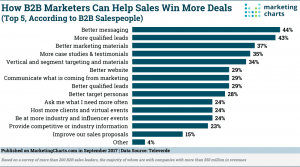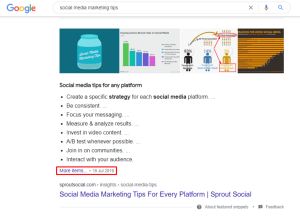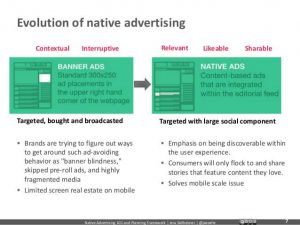— March 28, 2019
How Our Dynamic Account-Based Programs Fit Into the TEAM Framework
We’re often asked how we structure our account-based programs, and to be honest, it’s been a work in progress. We’ve spent years testing, measuring, and evaluating to continually dial-in our strategy. Eventually, we concluded that everything we do ties back to the TEAM framework.
TEAM, which stands for Target, Engage, Activate, and Measure, is a lightweight account-based framework that follows a continuous cycle of those four components based on a number of factors at the account level. Each will be in play across every stage of the account lifecycle as there are always opportunities to target net new or existing customers, engage accounts, activate information to enable sales and customer success teams, and measure engagement.
In a recent webinar, “10 Ways We’re Targeting You,” we unpacked exactly how we leverage the TEAM framework in our account-based programs. Let’s walk through each of these.
Targeting the Right Accounts
We always start by creating our target account list, which is a team (no pun intended) effort that starts with marketing but then involves sales. Working from our total addressable market (TAM), which is approximately 6,500 accounts –– obviously too large of an audience to go after at any one time –– the marketing team scales this into different segments.
Now, to clarify, we define TAM as accounts we’ve identified as potential fits rather than market share opportunity broadly. There’s a lot that goes into developing our TAM, but at a high level, we take our best customers –– those who had the best retention, upsell, etc. –– and build a model based on the following attributes of these customers:
- Firmographics
- Industry
- Employee size
Based on this information, we then prioritize these by fit ranking in which each account is given a score. This will bring our target list to approximately 1,000 to 2,000 accounts per program, which we typically run over a six-month duration.
Of this list, we look at more advanced data attributes like technographics and intent to gauge the ABM maturity level of the account and develop specific messaging for each level of maturity. Of course, now we’re using Account Hub in the Terminus ABM platform to manage all of this and automate many of our processes, but previously we were downloading spreadsheets from all our various platforms –– Everstring, Marketo, Salesforce, etc. –– to piecemeal our data before importing it back into Salesforce. On top of that, we were using this data to deploy high-touch campaigns and dynamically move accounts into different programs based on their level of engagement.
Needless to say, the manual approach is a big demand on resources. Doable, but infinitely harder to scale. But by using Account Hub in the Terminus platform, we can dynamically move accounts in and out of programs and create sub-lists to target with specific campaigns more efficiently. And while we do rely heavily on the technology and tools, technology isn’t what makes it successful. It’s the people and the process. And a big part of ABM is how marketing and sales are collaborating.
Every target account list our marketing team creates is reviewed by sales. We have several meetings prior to the start of each quarter and “negotiate” the list to refine the priority accounts. This is an important exercise. Marketing and sales have to agree upon the list before investing valuable time, resources and budget into it.
With the target list segmented, prioritized, and verified, we take action on engagement.
Engaging the Full Buying Committee
To activate or deepen engagement among our target accounts, we effectively run three programs over the course of a six-month span. Here’s a breakdown:
General (all target accounts). Everyone initially starts out here. This is effective in the early stage when you’re really trying to establish brand awareness and initial engagement. In this program, we leverage account-based display advertising, LinkedIn, and retargeting — all through Terminus. We’re also synchronizing messaging across Marketo nurture emails and our SDRs’ Salesloft cadences.
The same messaging is carried all the way through to our landing pages to create very integrated experiences –– everything from the messaging to the imagery is consistent. At this point, we’re not personalizing things, but we are trying to help educate and provide value.
Throughout this program and the following two, we’re measuring engagement and every four weeks, we’re changing up the design, copy and messaging across all our channels.
Highly engaged accounts. Each week we take the top engaged accounts and move them to our one-to-one program. This program is very high touch and personalized. In this program, we’re running one-to-one ads, personalized landing pages, Marketo nurture emails, direct mail through Sendoso, etc. The SDRs will also start creating personalized videos.
For instance, we were targeting Puppet, a software configuration management tool, so we deployed a series of personalized touchpoints. This included:
- One-to-one ads that read, “ABM success is sweet, and with Terminus it’s a piece of cake” and linked to an Uberflip sales stream landing page.
- The Uberflip sales stream included Puppet branding and included content specific to what the SDR knew they’d find valuable.
- Our SDR also sent a personalized video through Vidyard.
- Cupcakes sent via Sendoso landed a few weeks after we launched the campaign.
Simultaneously we deployed executive emails sent through Salesloft, as well as personalized webinars, which we used Marketo landing pages for registration.
Done manually, this is a very time-consuming process. But again, using Account Hub in Terminus, we are able to simply select the top engaging accounts, create a sub-list to send direct mail, one-to-one ads, and webinar invites. These sub-lists enable us to measure and compare the different programs and sub-campaigns of our programs.
Unengaged accounts. These are accounts showing the least engagement. While this is often very experimental, we’re always testing more efficient ways to drive engagement and move this group to the highly engaged program. Since the goal is to build a predictable pipeline of engaged accounts, we are always trying to figure out a new lower cost, lower effort ways to increase engagement. In some cases, this means creating a sub-list of unengaged accounts, creating one-to-one ads and optimizing spend and impressions.
Activate Sales at the Right Time
Once accounts are engaged, the goal is to progress them to activation. At this point, we’re taking all the engagement we’ve built, and enabling the team to have more relevant conversations and take more relevant actions. To do this, each week marketing identifies the top engaging accounts, prioritizes those accounts by engagement, and delivers each SDR the top 20 accounts.
SDRs also get real-time alerts when their accounts are engaging, but we want to create alignment and visibility across marketing and sales, and support the sales team in identifying where they should focus their attention. Here, we’re looking for engagement spikes, or how many people from an account have come to our site over a specific duration and how many times they visited. If there is a notable, meaningful increase in that engagement (for instance, it goes from one person from a particular account each week to 10 people visiting an average of two times), that’s an indication our SDRs should go check them out, and simultaneously marketing might deploy a personalized program or campaign.
With these spikes or surges, we’re also looking at the type of content the account is consuming so SDRs can effectively see who from their top account is engaging and what they’re most interested in. They use this insight to shape their conversations and outreach. But again, marketing is working collaboratively with sales to identify this information, prioritize outreach and direct the next best action to take.
For us, true marketing and sales alignment was about getting past being aligned on goals and really figuring out how to start behaving as a single team. Communication is critical. We keep it up with weekly meetings and quick daily huddles and communicate regularly to ensure each team is up to speed on metrics.
Measure Success
Though we can’t claim the phrase, one thing we say around the office is, “If you can’t measure it, you can’t fund it.” And in ABM, one big challenge is accurate measurement. Using the traditional funnel and methods for reporting marketing effectiveness don’t work for account-based reporting.
We developed account-based scorecards to measure effectiveness across the TEAM framework. We’re specifically looking at various KPIs within each of the segments including the number of engaged accounts, marketing qualified accounts, opportunities created, and closed won deals, among other metrics.
We’re also drilling into the program’s overall health and success, then subcomponents, such as accounts that have received specific assets like direct mail or one-to-one ads, and accounts that signed up for webinars, and so on. This allows us to compare the success of each tactic so we can determine what to keep, stop or start.
So, we look high-level at the overall program performance which is in a simplified scorecard that we share with our leadership team and other stakeholders to keep everyone informed. We then go one layer deeper to measure campaigns through an account-based lens, and finally to the account level, which has more granular metrics.
There you have it. This is a behind-the-scenes look at how we run our account-based programs internally. For more on account engagement, get The Complete Guide to Account Engagement for ABM.
Business & Finance Articles on Business 2 Community
(69)
Report Post







